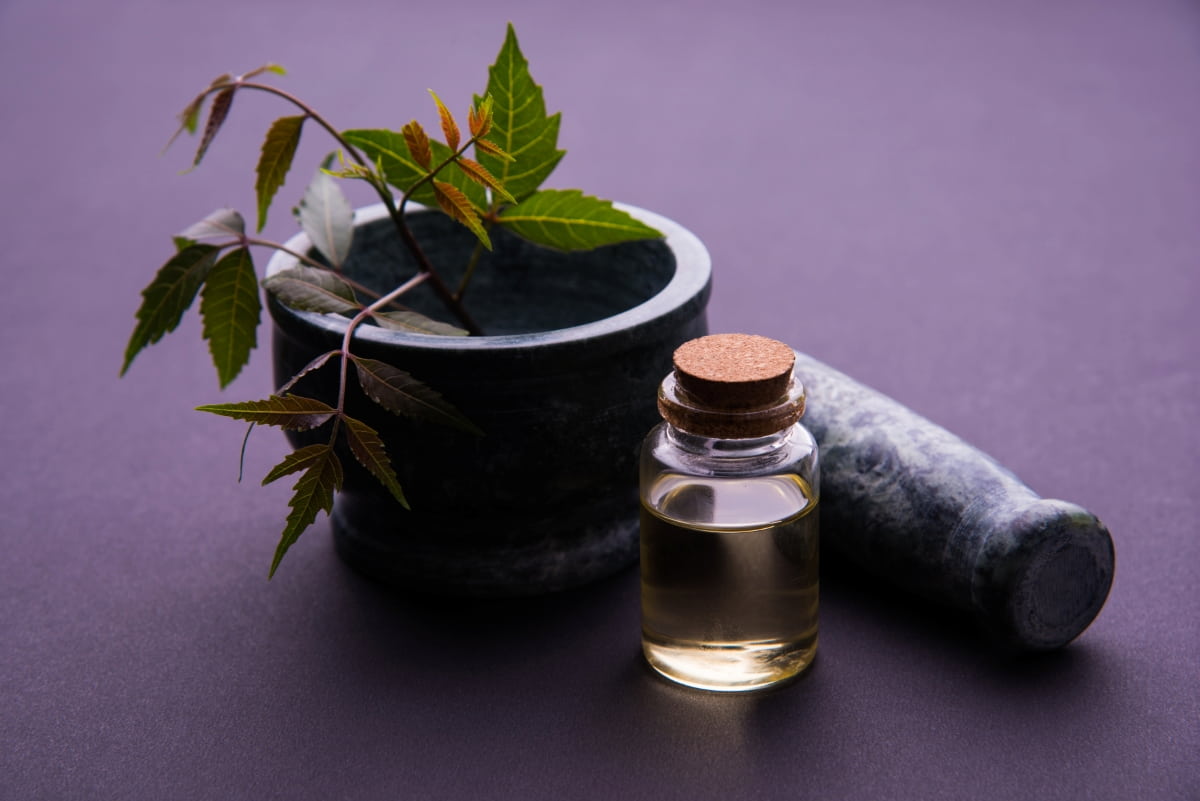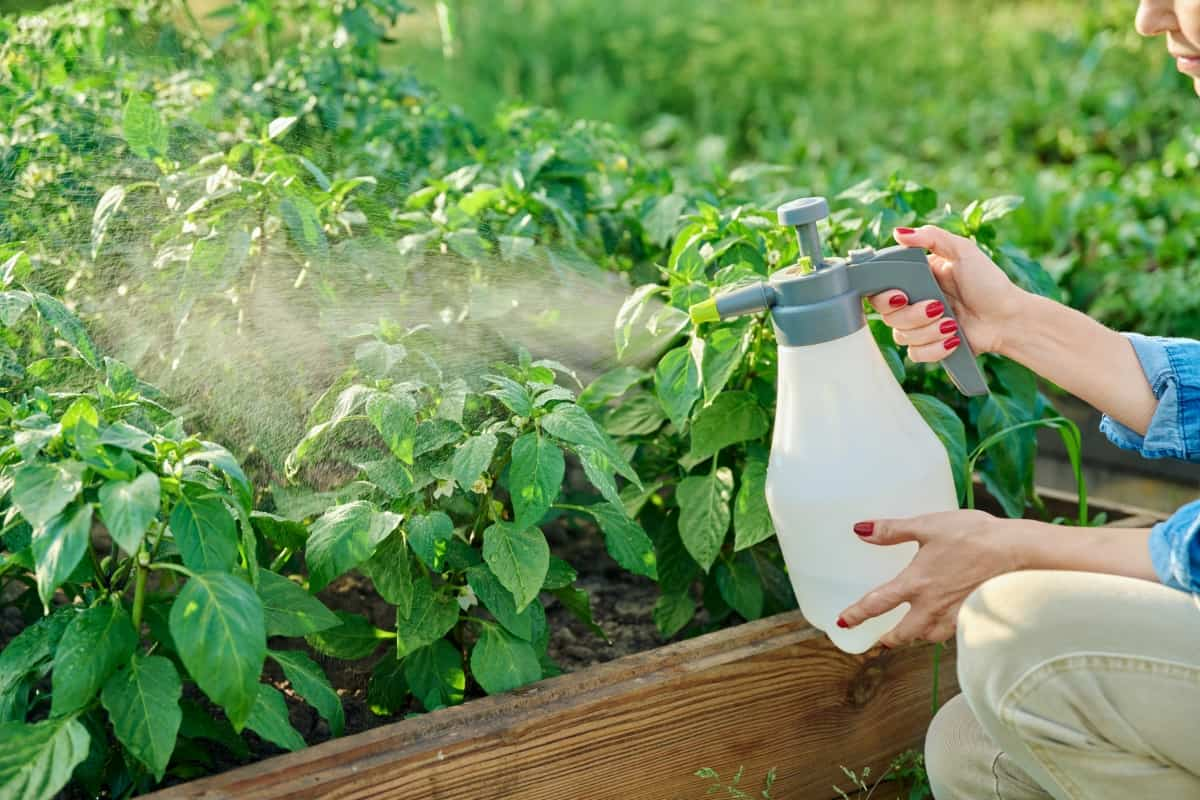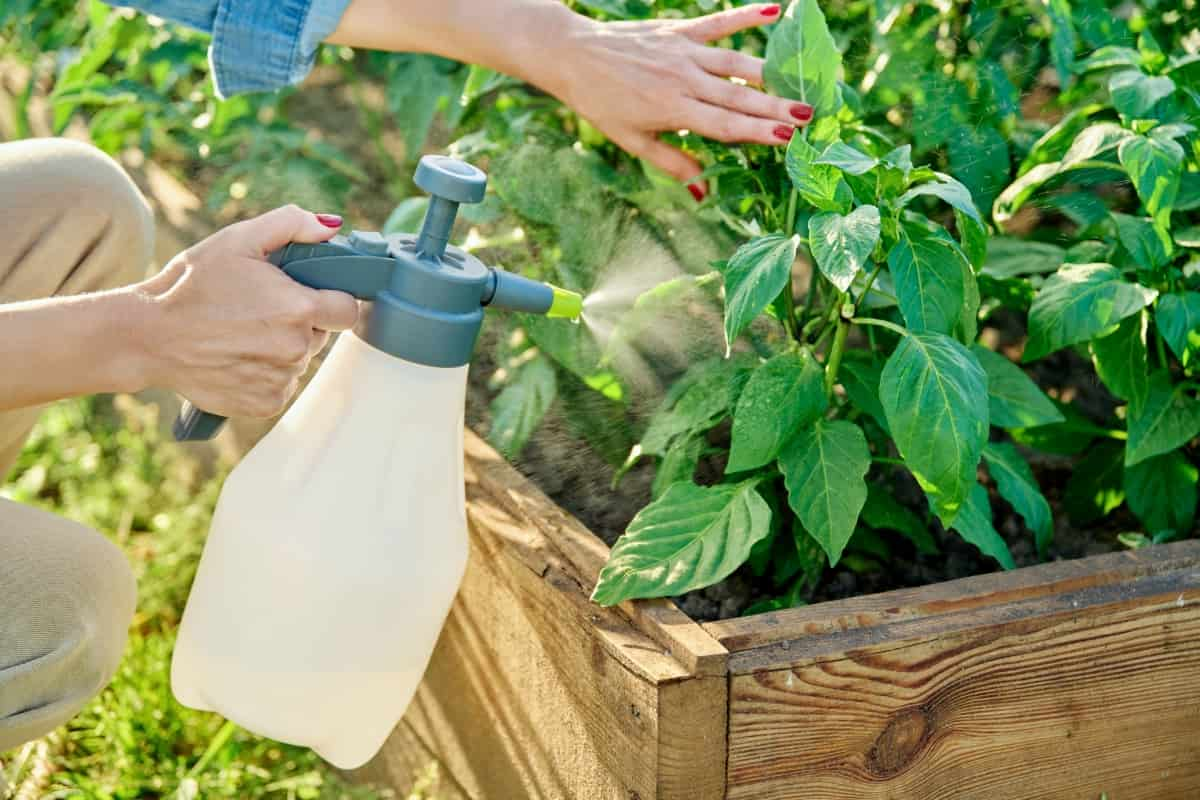Neem oil, derived from the neem tree’s seeds, is a potent natural solution for pepper plant care. Its dual role as a pesticide and fungicide makes it a versatile choice. Neem oil disrupts the life cycle of pests like aphids and spider mites, acting as a repellent and reducing feeding. Additionally, it inhibits fungal growth, preventing diseases like powdery mildew.

Dilute neem oil in water and apply it to pepper plants, focusing on the undersides of leaves where pests often reside. Regular application, especially during the growing season, helps maintain plant health. Neem oil’s eco-friendly nature and minimal impact on beneficial insects contribute to its popularity in organic gardening for effective and sustainable pepper plant care.
How to Use Neem Oil on Pepper Plants
Step-By-Step Instructions for Applying Neem Oil on Pepper Plants
- Dilution: Mix neem oil with water per package instructions; typically, 1-2 tablespoons per 4 liters.
- Morning Application: Apply neem oil in the morning to avoid sunburn on wet leaves. Ensure the plants are not stressed from heat.
- Sprayer Use: Fill a garden sprayer with the diluted neem oil solution.
- Underside Focus: Spray the solution on the undersides of pepper plant leaves where pests often hide.
- Full Coverage: Thoroughly cover all plant surfaces, including stems and both sides of leaves.
- Repeat Application: Repeat every 7-14 days during the growing season or as the product label recommends.
- Consistency: Maintain a consistent schedule for optimal pest and disease prevention.
- Avoid Flowering Stage: Avoid neem oil application when pepper plants are in full bloom to protect pollinators.
How to Prepare Neem Oil Solution with Proper Dilution and Mixing Techniques
- Choose High-Quality Neem Oil: Select a pure, cold-pressed neem oil for effectiveness.
- Measure Oil: Mix 1-2 tablespoons of neem oil per 4 liters of water for a general-purpose solution.
- Use Warm Water: Warm water helps neem oil mix effectively. Mix in a container with enough space for agitation.
- Add a Surfactant (Optional): Improve adhesion by adding some mild soap liquid or insecticidal soap.
- Stir Vigorously: Agitate the mixture thoroughly to ensure proper emulsification.
- Transfer to Sprayer: Pour the solution into a garden sprayer, evenly distributing all components.
- Apply Immediately: Use the neem oil solution promptly to maximize efficacy.
Identifying Common Pests on Pepper Plants for Neem Oil Application
Pests on pepper plants include aphids, spider mites, whiteflies, and caterpillars. Aphids are small, sap-sucking insects found on new growth. Spider mites leave fine webbing, causing stippling on leaves. Whiteflies are tiny, white insects that cluster on the undersides of leaves. Caterpillars, like the tobacco hornworm, chew on leaves and can defoliate plants.
In case you missed it: How to Use Neem Oil on Landscape Plants: A Natural Way of Getting Rid of Bugs in Landscape Gardens

Neem oil application is effective against these pests, disrupting their life cycles and acting as a repellent. Regular inspection of leaves, especially the undersides, helps identify early infestations, allowing for timely neem oil treatment to maintain the health of pepper plants.
How to Protect Pepper Plants from Pests and Diseases
- Neem Oil Application: Apply neem oil regularly to deter pests and inhibit fungal growth.
- Companion Planting: Grow pest-repelling plants like basil and marigolds alongside peppers.
- Mulching: Use organic mulch to regulate soil moisture and discourage soil-borne diseases.
- Crop Rotation: Rotate pepper plants annually to reduce the risk of soil-borne pathogens.
- Pruning: Trim overcrowded foliage to improve air circulation and minimize disease spread.
- Inspect Regularly: Monitor plants for signs of pests or diseases, on the undersides of leaves especially.
- Early Intervention: Address issues promptly to prevent the spread and ensure healthy pepper plants.
When and How to Apply Neem Oil on Pepper Plants
Apply neem oil on pepper plants in the early morning or late afternoon to prevent leaf burn. Dilute neem oil as directed, often 1-2 tablespoons per 4 liters of water. Use warm water for better mixing. Add a mild soap as a surfactant to enhance coverage. Thoroughly mix the solution, ensuring proper emulsification.
Transfer it to a spray bottle or garden sprayer. Focus on the undersides of leaves, where pests often reside. Apply every 7-14 days during the growing, excluding the flowering stage, to protect pollinators. Regular neem oil application helps control pests and diseases, promoting the overall health of pepper plants.
How to EnsureFull Coverage Application for Neem Oil on Pepper Plants
- Target Undersides: Direct the spray to the undersides of leaves, where pests hide.
- Complete Surface Coating: Coat all plant surfaces, including stems and both leaf sides, for uniform protection.
- Use a Surfactant: Add a mild soap to the neem oil solution for better adhesion and coverage.
- Proper Dilution: Follow recommended dilution ratios to maintain effectiveness.
- Consistent Application: Apply neem oil every 7-14 days during the growing season for sustained protection.
- Monitor Weather Conditions: Reapply after heavy rain to compensate for wash-off, ensuring continuous coverage against pests and diseases.
In case you missed it: How to Use Neem Oil on Dahlia: Best Natural Way to Get Rid of Pests on Dahlia

How to Assess the Effectiveness of Neem Oil Treatment on Pepper Plants
- Pest Reduction: Monitor and assess the reduction in pest populations, such as aphids or spider mites.
- Foliage Inspection: Examine the plant’s overall foliage for signs of disease, like powdery mildew; note improvements.
- New Growth Health: Check the health of new growth; vibrant and pest-free leaves indicate efficacy.
- Repeat Infestation: Note any recurrence of pests or diseases; a persistent issue may require adjusted treatment frequency.
- Plant Vigor: Assess the overall vigor of pepper plants; healthy growth and minimized stress indicate successful neem oil application.
Integrating Neem Oil with Other Pest Control Methods for Maximum Efficiency
- Companion Plants: Grow pest-repelling plants like basil alongside peppers.
- Beneficial Insects: Attract natural predators like ladybugs and parasitic wasps to control pests.
- Crop Rotation: Rotate pepper plants annually to disrupt pest cycles.
- Mulching: Use organic mulch to deter pests and maintain soil health.
- Hygiene Practices: Remove debris and diseased plant material to reduce pest habitats.
- Trap Crops: Plant sacrificial crops to lure pests away from peppers.
- Diverse Plantings: Mix plant varieties to reduce the risk of widespread pest infestations.
In case you missed it: How to Use Neem Oil on Outdoor Plants: A Natural Way to Get Rid of Bugs from Outdoor Garden Plants

Conclusion
In conclusion, utilizing neem oil on pepper plants involves a strategic approach. Dilute neem oil properly apply during optimal times, and focus on complete coverage, especially the undersides of leaves. Integrating neem oil with companion planting, beneficial insects, and other methods enhances efficiency. Regular monitoring and adjustments ensure a thriving, pest-resistant pepper garden, showcasing the versatility and effectiveness of neem oil in plant care.
- Feed Your Flock for Less: Top 10 Tips to Save on Chicken Feed
- Ultimate Guide to Ossabaw Island Hog: Breeding, Raising, Diet, and Care
- Hatching Answers: The Top 10 Reasons Your Chickens Aren’t Laying Eggs
- Eggs and Economics: Breaking Down the Cost of Raising Backyard Chickens
- Defend Your Greens: Proven Methods to Keep Iguanas Out of Your Garden
- Ultimate Guide to Cinnamon Queen Chicken: A Comprehensive Guide for Beginners
- Ultimate Guide to California Tan Chicken: Breeding, Raising, Diet, Egg-Production and Care
- Ultimate Guide to Marsh Daisy Chicken: Breeding, Raising, Diet, and Care
- 10 Types of Chicken Farming Businesses You Can Start for Profits